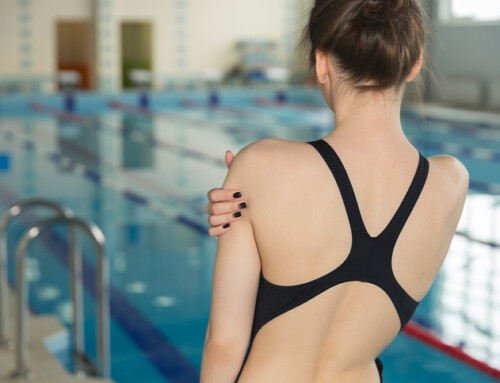PT For Swimmer’s Shoulder
The continuous, repetitive movement of any muscle is bound to cause damage over time. Swimmer’s shoulder, or subacromial impingement, is no different. People who swim frequently often experience shoulder pain or damage from using the same muscles repetitively. Studies show that between 40% and 91% of swimmers have shoulder pain or injuries. If you suffer from pain and reduced mobility, PT for swimmer’s shoulder can reduce the pain and get you back in the water.
Function of the Muscle
Shoulder muscles are the main part of the body that work to propel the body through the water. The shoulder, although it is one of the muscles with the largest range of motion, is a relatively unstable joint because it has a very shallow socket. The shoulder’s instability leaves it at high risk for injury after excessive use. In order to prevent injury, swimmers must train the chest, back and shoulder muscles so that they can work effectively together.
How Do I Know If I Have Swimmer’s Shoulder?
Sometimes it can be difficult to tell the difference between actual swimmer’s shoulder and just shoulder pain. There is a simple test you can do to determine whether you are experiencing swimmer’s shoulder or not.
Eyour arm out to the side and raise it above your head. If you begin feeling pain at about a 40-degree angle (straight out from the shoulder is 90 degrees) and the pain stops after your arm passes a 120-degree angle, you are most likely experiencing swimmer’s shoulder.
PT Plan for Swimmer’s Shoulder
A physical therapist can help modify movement and activities to help avoid aggravating your symptoms. Manipulation techniques, range of motion exercises, and pain management techniques are all part of a comprehensive physical therapy treatment plan.
- First and foremost, stop doing the movements that hurt. If swimming is hurting your shoulder, do not continue because it will exacerbate the injury. Wait to get back in the water until the pain has stopped or the injury has healed.
- Second, improving your posture can also help swimmer’s shoulder. Slouching puts your shoulder in an unnatural position. If you sit up straight your shoulder can rest in a position that will help it recover.
- Strengthening your rotator cuff muscles is the third major thing that you can do to help your shoulder. There are three main exercises that you can use to do this:
External rotation. Attach a band to a solid object and hold it in your hand, keeping your elbow at your side and moving your arm 90 degrees externally.
Abduction. Stand with the back of your hand against a wall. Push your hand against the wall for 5 seconds and then rest.
Retraction. Stand with a band looped around something solid so you can hold both ends. Keep your shoulders down and squeeze your shoulder blades together for 5 seconds and then relax.
If you are suffering from painful shoulder symptoms while in the pool or swimming with your family, contact us at Capital Area Physical Therapy at one of our NY Capital Region physical therapy clinics. Our experienced therapists will help you get will evaluate your pain and functionality and put together a PT plan for your swimmer’s shoulder to get you back in the water pain free!






